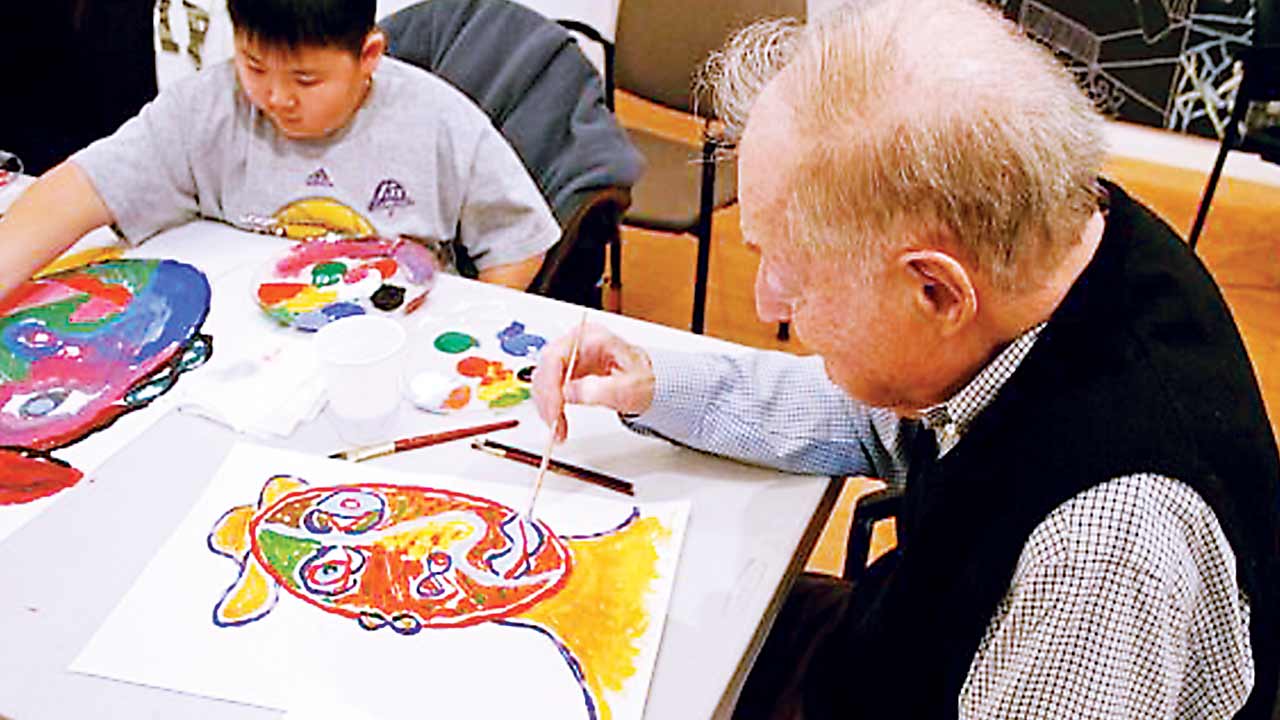
Pablo Picasso once said “Art washes away from the soul the dust of everyday life.” Since eons, art has been used as a means of communication, self-expression, group interaction, diagnosis, and conflict resolution. However, with time, it has also been discovered by experts that painting has a healing effect.
In the mid 20th century, art was widely accepted as a therapeutic approach during the healing process. Since then, many therapists applied this technique as part of the treatment. Director of Creative Image Mauritius, Tanvir Sahodeea, reveals that painting has helped several of her students to get out of depression and deal with emotions such as anger and sadness.
“During my career, I have seen people heal with painting. We live in a stressful society, many high profile people, doctors, lawyers or even professors have followed my classes. For them, painting is a mean to relax and express themselves. When a person paints, he lets his imagination wander and allows emotions to come out,” she says.
At Creative Image, you can see children as from the age of five as well as elders aged up to 75. “Painting has no age limit. If a five-year old can paint, so can a 75-year old. Many elders today feel lonely and instead of staying at home idle, they come to my studio. Here, they feel happy and surrounded. For many people, painting is a real boost. If someone feels low or sad, he can cheer up by painting. It is also a means of relaxation,” she says.

Tanvir Sahodeea encourages parents who have hyperactive children to turn to painting as a therapy. “Hyperactive children are hard to handle. Instead of letting the child run around the house, why not introduce him/her to painting. I have seen hyperactive children paint really well and this form of expression has helped them control their behaviour. Many parents complained that their children were anti-social but when these children joined my painting classes, their attitude changed and they started to interact with others. Children who do not fit in sports or feel left out as they do not have a passion for something can find solace in painting.”
Painting therapy activities
If you are stressed and alone at work, try these simple therapies to feel better.
- Design a postcard
- Give thanks with cards of your own
- Cut and paste a collage
- Make a digital collage
- Draw in response to music
- Bring a motivational message to a colorful life
 Karuna Rajiah: “It is a very soothing therapy”
Karuna Rajiah: “It is a very soothing therapy”
Psychologist Karuna Rajiah explains how painting therapy can help children or adults in dealing with depression and emotional issues.
How can painting therapy help a person in depression?
Painting therapy makes a depressed person focus on his goal, to be in the moment and be truly present. It is person centred and present centred. The person cannot dissociate himself when he has to paint. It is just like talking but in painting therapy, the person engages in a conversation between the himself/herself and the activity. It is also a very soothing activity as it feels good to see the paint glide across the canvas.
While painting, people feel that they are doing something for themselves. When a depressed person paints, he is free to choose his own colours, create and find his own voice within the activity. The person then finds the way on his own through the painting process. Once the person gets in the flow, he/she is so engrossed in the activity that the notion of time just disappears. People also express themselves through painting. Because it is an activity which has no right or wrong answers, it becomes very empowering and fun. It is essential for depressed people to spend time appreciating themselves, learning to find themselves or their way in life, and by focusing, the depressed person learn to understand his/her goal in life and also to develop more sense of composure.
Is painting therapy a way to calm down turbulent children?
Yes. Right in preschools, teachers initiate children to painting activities. They also do other art and expressive art activities such as drama, role-play and collage, among others. Turbulent children may not be very at ease with painting activity, as it is very quiet and can be quite boring. It depends on how they have been initiated to do the activities. If the child is free to choose his own colours and do what he wishes, then he/she can calm down. As a matter of fact, in our pre-primary education system, we have an area of learning known as the Expressive Creative and Aesthetic Development. I suppose this area of learning also help children to focus and develop other skills and attitudes such as being patient, becoming creative and so on.
How can painting therapy help a person feel better?
When painting, the person is free to choose his own colours. It is a sense of leadership skills. No one is there to cause any kind of frustration by commenting on the colours he/she chose. The person feels free to develop his own piece of art and nobody is there to judge the work. It is easier to express oneself through colours and drawings than to talk to a perfect stranger and feels that there is a barrier that he/she does not want to cross.
While painting, the backward and forward strokes of the brush or crayons can help a person feel better. It gives the feeling of observing an oscillating pendulum in front of our eyes, though it is not the same. It is not a way of self-hypnosis but it is one way of feeling lost in a piece of work that defines one's own creativity.








